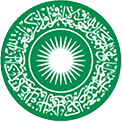
Stéphane Pradines
Stéphane Pradines is an archaeologist and Professor of Islamic Art and Architecture at the Aga Khan University, Institute for the Study of Muslim Civilisations (AKU-ISMC) in London. He was the Director of the excavations of the Walls of Cairo (Egypt) and many other excavations in the Indian Ocean (Maldives) and East Africa (Kenya, Tanzania, Comoros). He is a specialist of Islamic archaeology in Sub-Saharan Africa, Indian Ocean medieval trade and Muslim material culture of war (military architecture and weapons). Nowadays his main excavation projects are Kua in Tanzania and Lahore fort in Pakistan. Finally Stephane is the founding Editor of the Journal of Material Cultures in the Muslim World (MCMW), an academic journal in full open access published by Brill in partnership with The Aga Khan University and the Aga Khan Museum.





